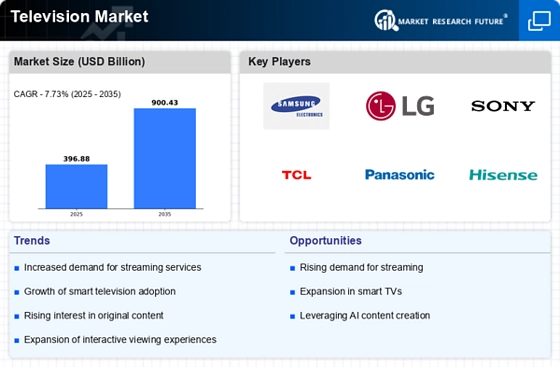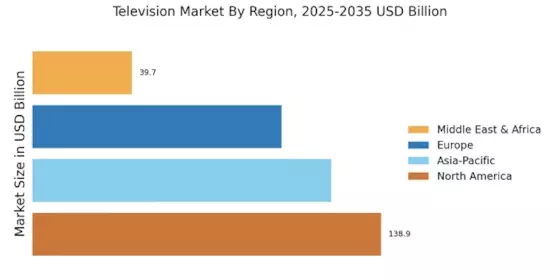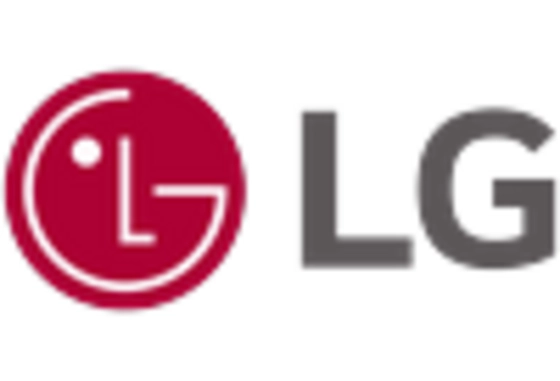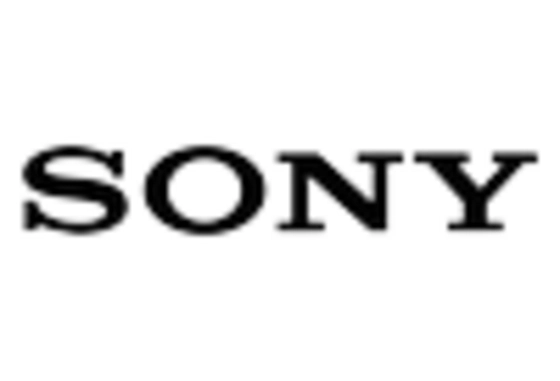Expansion of 5G Technology
The expansion of 5G technology appears to be a pivotal driver for the Television Market. With its high-speed internet capabilities, 5G enables seamless streaming of high-definition content, which is increasingly demanded by consumers. As of 2025, it is estimated that 5G subscriptions could reach over 1 billion, facilitating a shift in how viewers consume television. This technology not only enhances the viewing experience but also supports the growth of interactive and immersive content, such as augmented reality and virtual reality applications. Consequently, the Television Market is likely to witness a surge in demand for devices that can leverage 5G capabilities, thereby influencing manufacturers to innovate and adapt their offerings to meet these new consumer expectations.
Integration of Artificial Intelligence
The integration of artificial intelligence (AI) into television technology is becoming increasingly influential in the Television Market. AI is being utilized to enhance user experience through personalized content recommendations, voice recognition, and smart home integration. As of 2025, it is anticipated that AI-driven features could account for a significant portion of new television sales, as consumers seek more intuitive and engaging viewing experiences. This trend not only improves viewer satisfaction but also allows advertisers to target audiences more effectively, thereby increasing ad revenues. The potential for AI to revolutionize content delivery and viewer interaction suggests that its role in the Television Market will continue to expand, driving innovation and consumer engagement.
Shift Towards Subscription-Based Models
The shift towards subscription-based models is a defining trend in the Television Market. As consumers increasingly favor on-demand content, traditional cable subscriptions are declining, while streaming services are flourishing. By 2025, it is projected that the number of subscription video-on-demand (SVOD) users could exceed 1 billion, reflecting a significant change in consumer behavior. This transition is prompting content providers to rethink their distribution strategies, focusing on direct-to-consumer models that offer flexibility and convenience. Consequently, the Television Market is likely to see a rise in partnerships and collaborations among content creators and streaming platforms, as they seek to capitalize on this growing demand for subscription services.
Adoption of Advanced Display Technologies
The adoption of advanced display technologies is emerging as a crucial driver in the Television Market. Innovations such as OLED, QLED, and MicroLED are enhancing picture quality, offering consumers a more immersive viewing experience. As of 2025, it is estimated that the market for OLED televisions alone could reach 30 billion, indicating a strong consumer preference for superior display options. These technologies not only improve color accuracy and contrast but also contribute to energy efficiency, aligning with growing environmental concerns. Consequently, manufacturers are likely to prioritize the development of these advanced displays, which may lead to increased competition and further advancements in the Television Market.
Increased Focus on Original Content Production
The Television Market is currently experiencing a notable increase in the focus on original content production. Streaming platforms are investing heavily in creating exclusive shows and movies to attract and retain subscribers. In 2025, it is projected that spending on original content could surpass 100 billion, reflecting a significant shift in content strategy. This trend not only enhances competition among platforms but also elevates consumer expectations for quality and diversity in programming. As a result, traditional broadcasters are compelled to adapt by producing their own original content or partnering with streaming services. This dynamic is likely to reshape the Television Market, as content becomes a key differentiator in a crowded marketplace.


















Leave a Comment